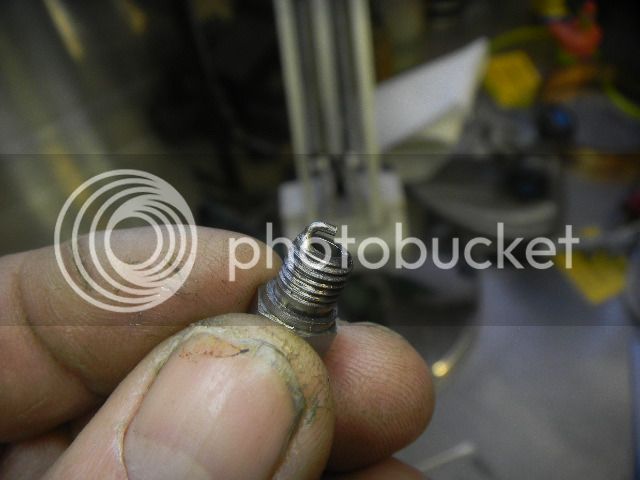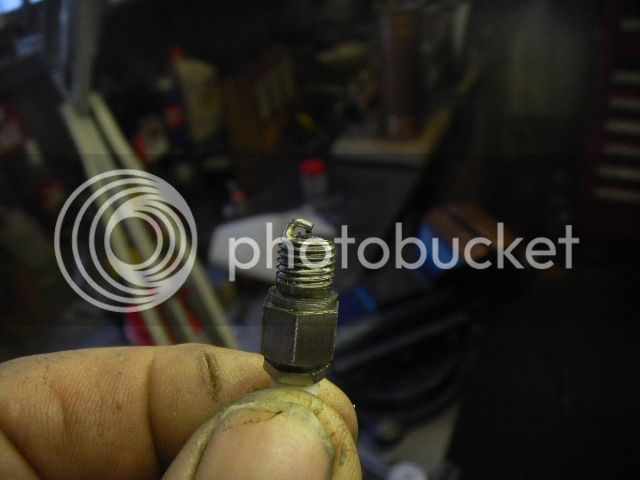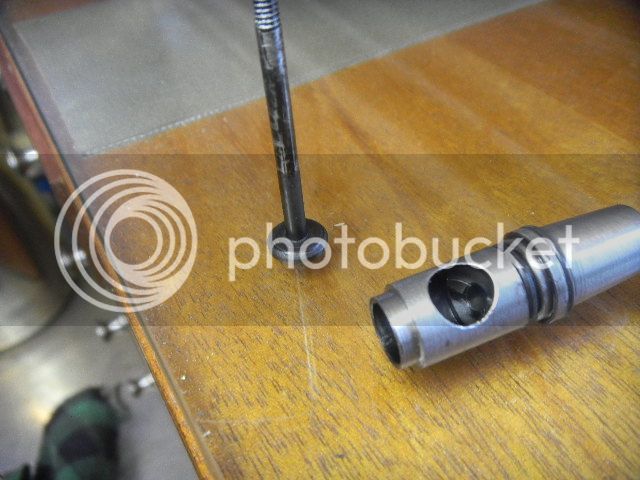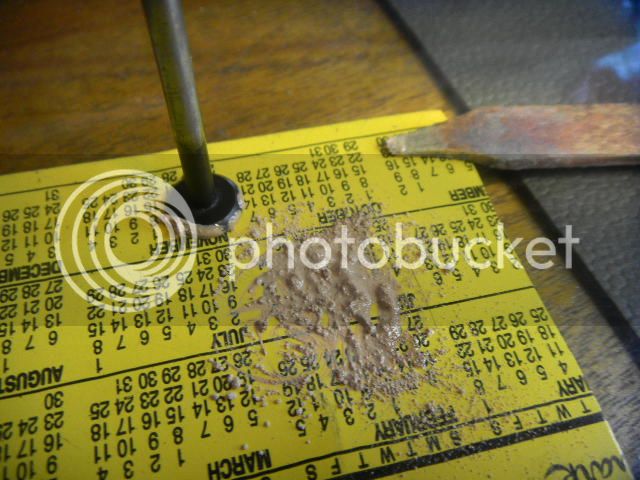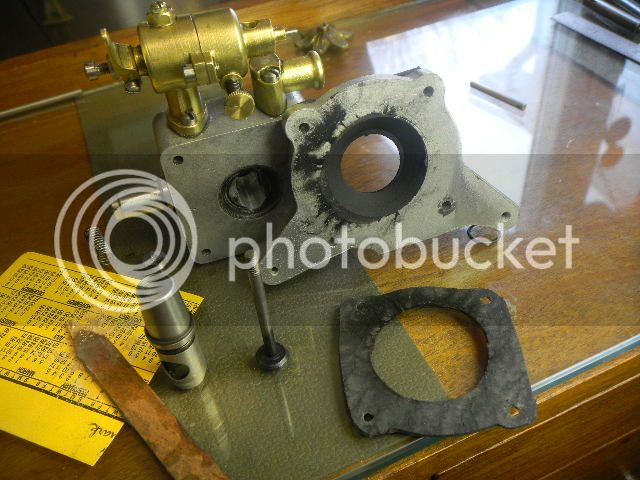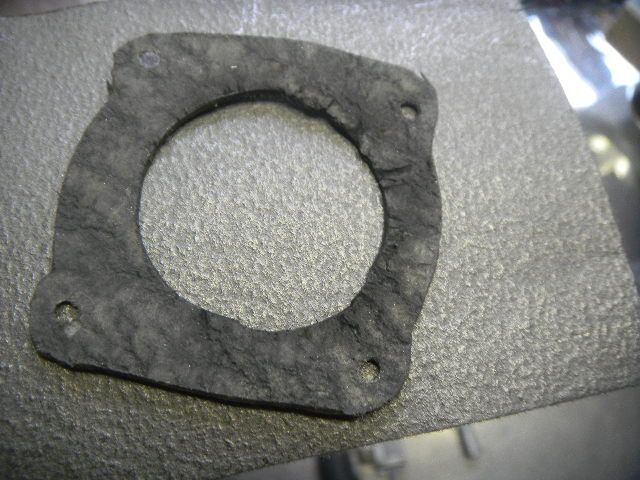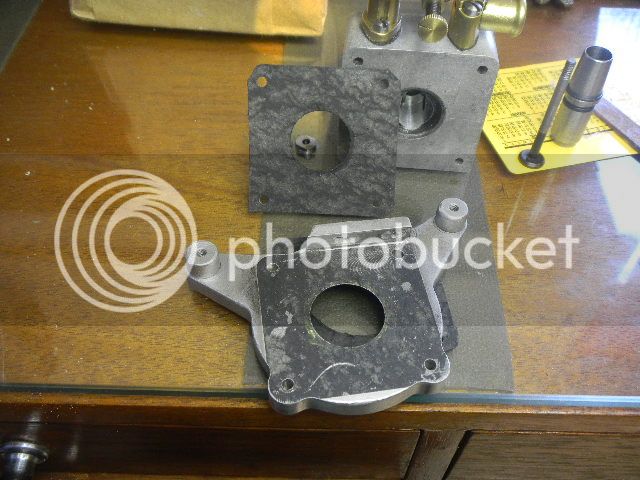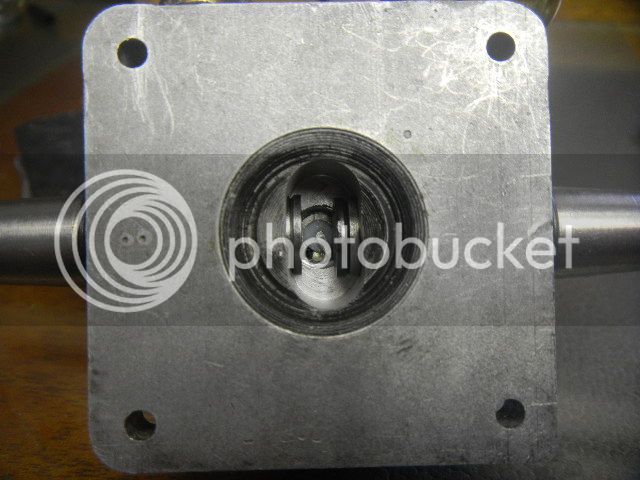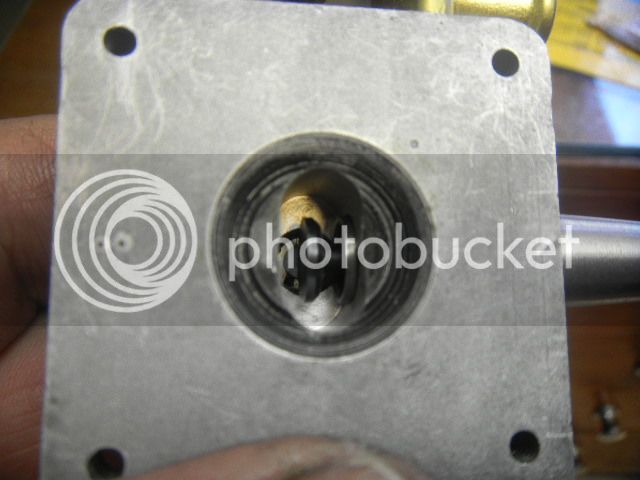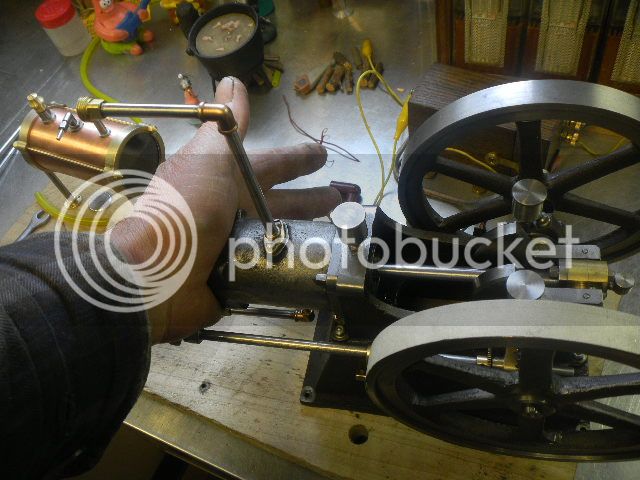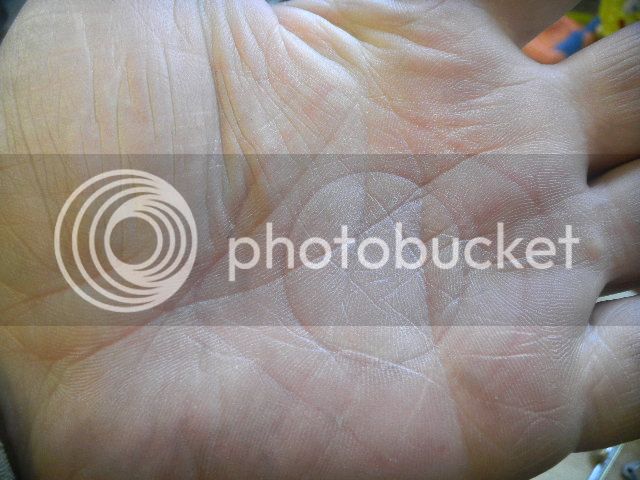Well, the Cabin Fever Expo for this year is now history, had a great time, met some more of the members, saw a lot of really nice works of art, bought a few things, also talked with others until my voice got weak, just a great time.
As well as the three days I set aside for the show, I also got a break from work for a bit, which means I got some time to survey the damage. Not real damage, just the “my shop seems to have exploded” type of damage.
I spent a couple of days putting things away, contemplated what the next step for the Wyvern would be and the needle valve issue seems to be the first on the list.
I saw only one Wyvern at Cabin Fever, a good running “work in progress”. Nicely built and the man who built it made an unusual modification to the cylinder head.
He made an automatic air start system for it which entailed a completely ground up redo of the head.
I chatted with him for a bit and asked him what size jet he was using in the carb, I was surprised to hear he used a No. 75 drill in lieu of the No 70 specified, but the engine was running perfect, couldn’t argue that.
Back in the shop, I took a look at my shiny new set of tiny drills, that No 75 was scary small, and after a bit of thought I decided that a 72 was nearly in the middle and that would be my new jet size.
Starting with a 3/16 brass hex bar (Expo purchase, two assortments 1/8 to ½, one brass and on SS).
In the lathe drilled part way through 3/64” then rounded outside for the fuel hose and parted off, then flipped around and bumped with a spot drill and got ready to drill the chosen no. 72.
New weapon is another Expo buy (Little Machine Shop, show special, 10 percent off catalogue), precision driller, had to have it.
In the tailstock chuck and with the old Grizz turning at warp speed, I had no trouble at all pecking the bit through, should have bought one of these a while ago.
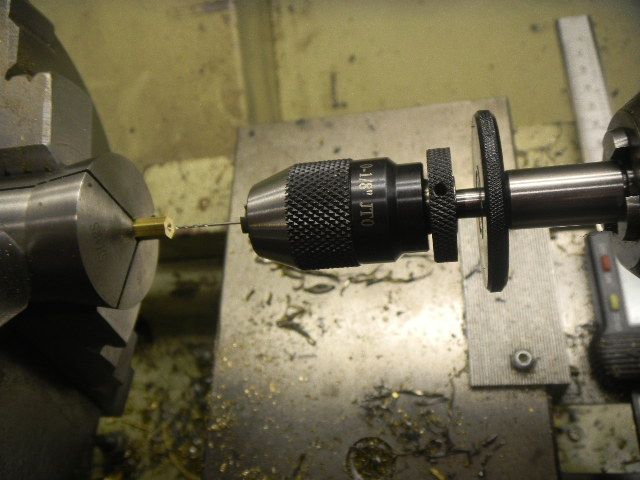
The outside was reduced and threaded 4-40, that part done. An almost amazing hole size difference.

Now to modify the old needle, which meant to cut off the machined point and drill the end to fit a No. 5 ? sewing needle. Somehow I can’t remember off hand if it was a 4 or 5.
With the head precariously grabbed in a 5C collet in the three jaw the hole was drilled the length of the drill flutes.
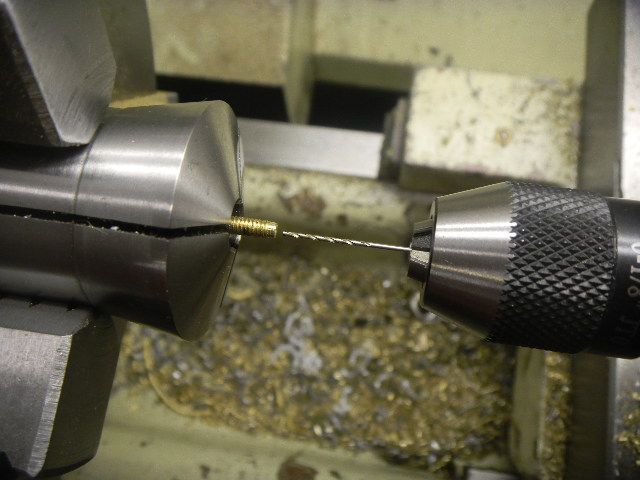
The needle was then cut to length and Loctited in place.
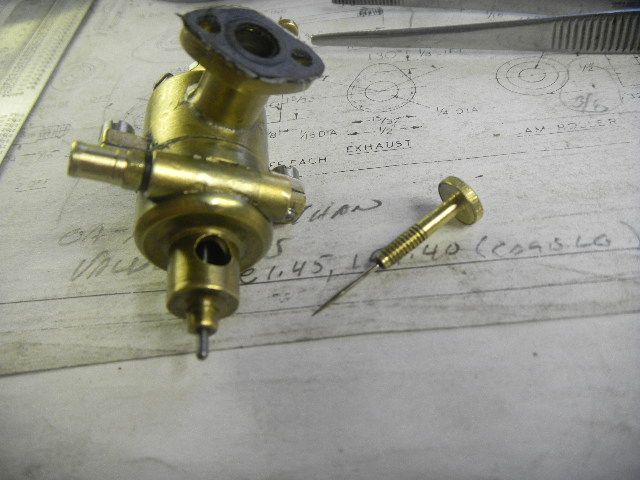
Put back on the engine, it started readily and, with a little adjustment, got the engine running reasonably slow.
I shut it down and added water in the cooling tank and restarted it. It sounded like the timing was a tad late but I just let it run,. After a couple minutes it started slowing down and running rough and in a short time just quit.
Now what? It was turning freely and not real hot, so that wasn’t the problem.
OK, check the timing, yes in runable range. I say runable because it’s a bit difficult, for me at least, to turn the flywheel and listen for the tiny spark. At any rate runable range, to be fine tuned by trial and error when I get it RUNNING RIGHT.
I’m in the frustrating stage of engine building, working the bugs out.
The latest bug was the threaded keeper on the exhaust valve worked loose.
I didn’t like that detail when I was building it and when I saw Mike’s engine I was sorry I did the that way.
I’m going to, pretty much, take things apart and redo some sore spots.
One of which will be to O-ring the head, and I’ll deal with the threaded keepers at that time. Deal with will probably only be to Loctite them to the shafts.
Another will be to make tapered bushings for the flywheels.
I somehow got the holes too large. They seemed a good fit early on, but as the build progressed they loosened up, maybe from me spinning them on the shaft, which I did a lot.
When I would tap the tapered key in place it was tipping the flywheel slightly causing a wobble.
Question: Should the keyway in the flywheel have been broached at an
angle to match the key??
The cam shaft side ended up with a piece of .001 shim all around to keep it from wobbling. Although I think the amateur builder was probably the main cause.
More adventures to follow.
GUS

